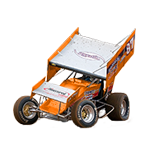- Home
- Illustrator
- Discussions
- Offset path offsetting both ways, instead of one.
- Offset path offsetting both ways, instead of one.
Offset path offsetting both ways, instead of one.
Copy link to clipboard
Copied
Hey guys, so I am using AI in a pretty basic way, the company i work for makes signs. Basically I will have a sheet thats roughly 48"x24" with as many signs that fit on it. What I need to do is offset the outline of each sign by .03". My issue is that whenever we have a sign with rounded corners (which is pretty often) it wants to offset inside and out, so I have to cut, delete old lines, past in place my cut lines, then manually delete each of the outside shapes. It can be extremely tedious and time consuming, considering we can have a project with well over 1000 signs. Does anyone know an easier/quicker way to do this? We don't even use a fill, just sign shapes, and the text on the sign.
Thanks in advance!
[Here is the list of all Adobe forums... https://forums.adobe.com/welcome]
[Moved from generic Cloud/Setup forum to the specific Program forum... Mod]
Explore related tutorials & articles
Copy link to clipboard
Copied
You can do math in any of your numerical entry points now. Not exactly sure what you have going on with the signs at the moment, like are they using a stroke on the edges and what not. But I just made to rectangles to represent the signs, with some text inside. Using the black arrow tool, I selected all of the parts of one of the signs. Up on the top, you can see the X and Y positions. I clicked on the x position which at the time was at 10.25 inches. Right after the 10.25. and before the in, type +.03 and enter. It will move everything over.
I just did this on the x axis, but it works in either direction.
1 thing to remember, if you have a stroke around the edges of the sign and the stroke is set to be in the middle or the outside, you may not get the desired gap in between the images. The stroke needs to be set to inside for it to work correctly at only moving .03 inches.
When I dropped those two "signs" onto the page, I made sure that Smart guides were turned on so that when I put them next to each other, they would snap into place, exactly side by side.



Copy link to clipboard
Copied
Typically, when Offset Path results in bidirectional offset, it's a dead giveaway that it's been applied to an open path. Did your sign shapes originate in Illustrator or elsewhere?
Copy link to clipboard
Copied
Hey John, yea I should have mentioned that. Our "source files" we use come from our design team that use Corel. Then we, on the production side, use Illustrator. I believe the issue is that they are open paths, if there is a quick way to close the paths that would save so much time.
Copy link to clipboard
Copied
cNolder0941 wrote
Our "source files" we use come from our design team that use Corel. Then we, on the production side, use Illustrator.
That's quite certainly the issue, and a workflow defect that I'd encourage your company to address on a systemic level.
It's been a long time since I used CorelDRAW regularly, so I don't know what formats are supported in the version your design team runs, but it could just be a matter of asking them to save differently. Are they giving you [ugh] EPS files?
if there is a quick way to close the paths that would save so much time.
It sure would, but without a specimen to examine, it would be guesswork to recommend a method, and whether any one method will work on every file is another matter. So, now that you've identified the core issue as open paths, (and short of your workflow breakage getting corrected by the company), it will be up to you and your design team to cooperatively experiment to find a viable and repeatable solution that will help them deliver closed paths, or enable you to better deal with their open ones.
Copy link to clipboard
Copied
Corel Draw can create clean vector artwork and can even export it as AI files (CS5 or even CS6). A clean file should stay clean that way.
Any native Corel Effects might ruin everything of course, because they will need to be expanded.
Copy link to clipboard
Copied
That's what I was afraid of. I'm relatively new to the company, and our design team likes to fight changes, naturally. Their preference for CorelDRAW is because they can put everything on one "page" so to speak, no size restrictions. I'll be sure to bring it up at our next production meeting, but I have a feeling it'll be our side that just has to deal with the issue. I appreciate the insight!
Copy link to clipboard
Copied
cNolder0941 wrote
That's what I was afraid of. I'm relatively new to the company, and our design team likes to fight changes, naturally. Their preference for CorelDRAW is because they can put everything on one "page" so to speak, no size restrictions. I'll be sure to bring it up at our next production meeting, but I have a feeling it'll be our side that just has to deal with the issue. I appreciate the insight!
You should still be able to make it work without forcing either end to change applications. What file format are they giving you? If they (their management) are unwilling to make a small change in the way they save the file for the sake of clean production workflow, then the company has a much bigger problem than your extra time spent cleaning up paths that offset in 2 directions.
Copy link to clipboard
Copied
There may be other way to help you, but need to see screenshot of atleast one example of what you are working on.
Explore the appearance palette and stroke alignemnt to give you options that are editable and ability to stack and make more complex artwork.

Copy link to clipboard
Copied
Thanks Mike, I'll do some digging around on that when I have a little free time. As far as a screenshot, my company probably wouldn't allow that. They like to keep things "in house". But as a quick description, basically take a 48x24" rectangle, with lets say 9x9" signs set inside. So just a big box, with smaller boxes inside of it. Zero fill, stroke at .001. It's all quite basic for what AI can do, but still rather efficient despite having to individually delete all duplicated offsets.
Copy link to clipboard
Copied
cNolder0941 schrieb
Thanks Mike, I'll do some digging around on that when I have a little free time. As far as a screenshot, my company probably wouldn't allow that. They like to keep things "in house". But as a quick description, basically take a 48x24" rectangle, with lets say 9x9" signs set inside. So just a big box, with smaller boxes inside of it. Zero fill, stroke at .001. It's all quite basic for what AI can do, but still rather efficient despite having to individually delete all duplicated offsets.
Nobody can help you without an actual file or even a screenshot.
We don't need the details or text or anything. Your company can't really have issues with a simple rectangle. If that's all that's giving you problems.
Copy link to clipboard
Copied
You could turn all of the open paths into shapes, thus eliminating the open paths. Then you could do the offsets as I stated above. But like others are saying, without seeing what you are working with, it's really hard to give a definitive answer.
Copy link to clipboard
Copied
I frequently use both Adobe Illustrator and CorelDRAW in my sign design work every day. Both have their pros and cons. Both have lots of little things and big things each does much better than their rival. I do not find either drawing program to be a satisfactory replacement for the other. And I've looked at other contenders (such as Affinity Designer) and they offer even less overlap.
I'm familiar with the "Fillet/Scallop/Chamfer" function in CorelDRAW that is normally used to generate corner effects on objects, such as a rounded rectangle. I've never seen the effect yield any objects with anchor points that are broken open along the path. If the effect is applied on a closed path the path will remain closed. The effect has worked reliably (and very precisely) through many version cycles.
I suspect what is happening is a bit of "Messy Marvin" user error. I've been doing this work for over 25 years and will still be surprised at some of the odd, illogical methods some people will conjure up to do a simple task. Whoever is preparing the objects for sign blanks is doing something pretty odd. You'll have to investigate the workflow.
We don't use Illustrator as an in-between program for object nesting layouts to send to a routing table. In our case we use Flexi and EnRoute. For us Adobe's applications come in more handy for large format printing purposes, as well as generating static graphics and motion graphics for LED boards.
If I use CorelDRAW to create a nesting layout to export to Flexi (or even send to Illustrator) I'll remove any line stroke values. The objects should have only a flat, solid fill. That will eliminate any duplicate lines that could show up in the target program. It will also provide a big hint to the user if any paths are open, not closed. You won't see any fill on the object if the path is open. The latest versions of CorelDRAW will show a doubled-up pair of anchor points (or "nodes") for a broken open point on the path. If there are any compound paths care must be taken to make sure the objects don't get sliced during export. The user must check the EPS or AI export filter to make sure an option like "simulate compound paths" is not checked. It's usually a good idea to look at the outline view of the artwork when it is imported into Illustrator.
Copy link to clipboard
Copied
Everything comes over in EPS format, do use other programs for our CNC and WaterJet, I use AI to send jobs directly to JobControl for our Laser cutter. Like I stated earlier, I'm pretty new to this company, and to all programs we're using. I'm just looking for ways to streamline this process and eliminate wasted time. I appreciate the insight, and I'll be sure to bring up these concerns with our lead designer to see if there is maybe a way that they can adjust their process without adding time to their job also. We're a small company, so everyone has a pretty large amount of work each day. But like you and someone else said, its about workflow and efficiency.
Copy link to clipboard
Copied
It should be an easy fix. If the objects are only being cut then it should be a simple matter of selecting all the objects at once, applying a solid fill and eliminating any line strokes before exporting. That still doesn't address how the paths in question are getting broken open in the first place. It points more to a user work-process issue.
Which version of CorelDRAW are they using? Is an up to date version of Illustrator being used, or an older non-Creative Cloud legacy version?
Get ready! An upgraded Adobe Community experience is coming in January.
Learn more

